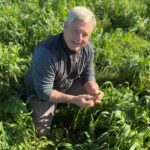Supply issues just nuts for manufacturer
Nelson manufacturer Pic’s Peanut Butter is revisiting the craft of peanut butter making due to peanut supply challenges. COVID-19 has forced many companies to go back to first principles in their […]
Nelson manufacturer Pic’s Peanut Butter is revisiting the craft of peanut butter making due to peanut supply challenges.
COVID-19 has forced many companies to go back to first principles in their business. For Nelson Tasman business Pic’s Peanut Butter, peanut supply issues exacerbated by COVID-19 meant revisiting the craft of peanut butter making using peanuts sourced from countries other than Australia.
“We’ve exclusively used Australian peanuts for 12 years,” says Heath Bowman, Operations Manager for Pic’s Peanut Butter. “Drought conditions in Australia had already signficantly impacted on our peanut supply,” says Heath, “but the impact on shipping due to COVID-19 added to the challenges we faced. We needed to get enough high-quality hi oleic peanuts to keep up with the demand for our peanut butter, which increased during lockdown. We took our role as an essential business making food for people really seriously.
“Working with hi oleic peanuts from other countries was like a wine maker suddenly needing to use an entirely new grape variety, but under massive time constraints and consumer demand pressure. We were totally up for the challenge though. Providing great peanut butter for people to eat is what we’re all about.”
The Pic’s Peanut Butter production team set about using their skills and expertise to craft blended peanut butter from nuts sourced from Zambia, Brazil, Argentina (for a short time), and their usual suppliers in Australia.
There is a lot to consider when working with a new peanut supply, says Heath, in addition to the usual skillset the team bring to bear when working with Australian peanuts.
“We have to consider a wide range of variables including the soil conditions and climate where the peanuts were grown, moisture and oil content in the peanuts, whether we’re working with split or whole peanuts, and colour. It requires skill and experience to get the peanut butter right. And it absolutely has to be right. Keeping our word and making the peanut butter our customers want doesn’t change even if our nut supply source might be different.”
Now that business is returning to more normal conditions, peanut supply issues will ease. However, the flow-on impact of the Australian drought continues. “We get as many peanuts from Australian farmers as we can , currently it still accounts for about half of our total supply, but we will still need to augment our supply of Australian peanuts until their harvest returns to normal levels. Having said that, we are really happy with the beautiful taste profile we’re achieving with the Brazilian peanuts we’ve been able to source, in addition to the peanuts we sourced from Zambia.”
Customers may notice that Pic’s Peanut Butter labels currently don’t specificy an exact country of origin for the peanuts they contain. This will be reviewed again in the spring when the peanut supply has stablised further.
However, for a few months (or approximately .02 percent of the total time Pic’s has been making peanut butter) during which the blend of countries of origin has fluctuated, Pic’s has implemented a QR code system on the labels. By scanning the the QR code on the jar and entering the batch code on the label into the ‘batchinator’ on the Pic’s Peanut Butter website customers can find out the source country or countries of the peanuts in each jar.
“We know that Pic’s customers want to know where our ingredients come from, who grows them, and exactly what goes into our peanut butter,” says Heath. “The Batchinator has been our short-term solution for providing this information. For the past 12 years it’s been really simple, ‘contains 100% Australian peanuts’ loud and proud on every label. Now that we have successfully used the Batchinator we’ll be able to revert to it in the future if our Australian peanut supply fluctuates and we need to supplement that supply with high-quality hi oleic peanuts from other countries.”






